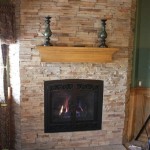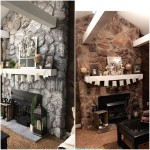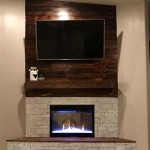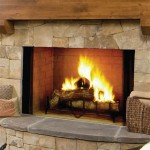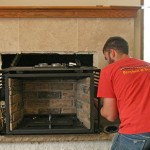High Efficiency Gas Fireplace Insert Reviews: A Detailed Guide
Gas fireplace inserts have emerged as a popular choice for homeowners seeking an efficient and convenient way to heat their homes while enjoying the aesthetic appeal of a traditional fireplace. These inserts are designed to fit into existing masonry or prefabricated fireplace openings, transforming them into powerful and controllable heat sources. Compared to traditional wood-burning fireplaces, gas inserts offer cleaner burning, reduced maintenance, and improved energy efficiency. This article provides a comprehensive review of high-efficiency gas fireplace inserts, exploring their features, benefits, and factors to consider when making a purchase decision.
Understanding the concept of high efficiency is crucial. It refers to the percentage of fuel converted into usable heat, with minimal heat loss through the chimney. High-efficiency gas fireplace inserts typically achieve efficiency ratings between 70% and 90%, significantly surpassing the efficiency of open wood-burning fireplaces, which often fall below 20%. This improved efficiency translates directly into lower heating costs and a reduced environmental impact.
Several factors contribute to the efficiency of a gas fireplace insert. These include a sealed combustion system, which draws air from outside the home for combustion and vents exhaust gases directly outside, preventing heat loss through the chimney. The use of advanced burner technology, such as ceramic or ribbon burners, ensures complete combustion and maximizes heat output. Furthermore, the design of the firebox and heat exchanger plays a crucial role in extracting heat from the combustion gases and distributing it into the room. Some models also incorporate features like variable-speed blowers to further enhance heat circulation.
Key Point 1: Understanding Efficiency Ratings and Heating Capacity
The efficiency rating of a gas fireplace insert is a primary indicator of its performance. Look for models with higher Annual Fuel Utilization Efficiency (AFUE) ratings. AFUE represents the ratio of heat output to fuel consumed over a typical year. A higher AFUE indicates greater efficiency and lower operating costs. It's important to note that laboratory-tested efficiency ratings may differ slightly from real-world performance, depending on factors such as installation, ventilation, and user settings.
Beyond efficiency, consider the heating capacity of the insert, measured in British thermal units (BTUs). The BTU rating indicates the amount of heat the insert can generate per hour. Choose an insert with a BTU rating appropriate for the size of the space you intend to heat. Oversizing an insert can lead to uncomfortable temperatures and reduced efficiency, while undersizing it may not provide sufficient heat. Factors such as insulation, window area, and ceiling height also affect heating requirements.
To determine the appropriate BTU rating, calculate the square footage of the room you wish to heat and consider the climate in your region. A general rule of thumb is to use approximately 30 to 40 BTU per square foot in colder climates and 20 to 30 BTU per square foot in milder climates. Consult with a qualified HVAC professional or fireplace retailer for personalized recommendations based on your specific needs and circumstances.
It is also essential to understand the difference between steady-state efficiency and seasonal efficiency. Steady-state efficiency is measured under ideal laboratory conditions, while seasonal efficiency accounts for the variations in heating demand and operating conditions that occur throughout the year. AFUE is a measure of seasonal efficiency and provides a more realistic representation of the insert's performance over time.
Many high-efficiency gas fireplace inserts are equipped with features designed to optimize fuel consumption and maintain consistent temperatures. These features include thermostatic controls, which automatically adjust the burner output to maintain a desired temperature, and programmable timers, which allow you to schedule heating cycles to match your lifestyle. These features can significantly reduce energy waste and lower your heating bills.
Key Point 2: Exploring Different Types of Gas Fireplace Inserts
Gas fireplace inserts are available in two primary fuel types: natural gas and propane. Natural gas is typically a more cost-effective option if a natural gas line is already available in your home. Propane, on the other hand, is a more versatile option as it can be stored in tanks and used in areas where natural gas is not accessible. Propane inserts tend to burn hotter than natural gas inserts, but they also require the recurring expense of propane refills.
Within each fuel type, different types of burner systems exist. These include conventional burners, which produce a traditional flame pattern, and ribbon or ceramic burners, which offer more uniform heat distribution and a more visually appealing flame. Ribbon and ceramic burners tend to be more efficient than conventional burners, as they promote more complete combustion of the fuel.
Another key distinction is between direct-vent and vent-free gas fireplace inserts. Direct-vent inserts draw air from outside the home for combustion and vent exhaust gases directly outside through a sealed venting system. This ensures that no combustion gases enter the living space, making them a safer and more efficient option. Vent-free inserts, on the other hand, draw air from the room for combustion and vent exhaust gases directly into the room.
While vent-free inserts offer the advantage of not requiring a chimney or venting system, they produce small amounts of carbon monoxide and other pollutants. They are also subject to stricter regulations and may not be permitted in all jurisdictions. Direct-vent inserts are generally recommended for their safety and efficiency benefits.
The aesthetic design of gas fireplace inserts also varies widely. Options range from traditional log sets with realistic flames to modern designs with glass beads or stones. Consider the style of your home and personal preferences when choosing an insert to ensure that it complements your existing décor. Some models also offer features such as adjustable flame height and color, allowing you to customize the appearance of the fire.
The material used in the firebox construction also impacts the insert's performance and lifespan. Cast iron fireboxes are known for their durability and heat retention, while steel fireboxes offer faster heat-up times. Ceramic glass is typically used for the viewing window, as it can withstand high temperatures and provide a clear view of the flames.
Key Point 3: Factors to Consider Before Purchasing and Installing a Gas Fireplace Insert
Before purchasing a gas fireplace insert, conduct a thorough inspection of your existing fireplace and chimney to ensure that they are in good condition and suitable for installation. The chimney should be professionally inspected and cleaned to remove any creosote buildup, which can pose a fire hazard. The fireplace opening should also be measured to ensure that the insert will fit properly.
Installation of a gas fireplace insert should be performed by a qualified HVAC professional or certified fireplace installer. This is essential to ensure that the insert is installed safely and according to manufacturer's specifications. Proper installation includes connecting the gas line, installing the venting system, and ensuring that the insert is properly sealed to prevent air leaks.
Consider the long-term maintenance requirements of the gas fireplace insert. Regular cleaning and maintenance are essential to ensure optimal performance and longevity. This includes cleaning the burner, inspecting the venting system, and checking for any signs of wear or damage. Refer to the manufacturer's instructions for specific maintenance recommendations.
Also, be aware of local building codes and regulations regarding gas fireplace inserts. Some jurisdictions may require permits for installation or have specific requirements for venting systems. Contact your local building department to determine the applicable regulations in your area.
Warranties are an important consideration when purchasing a gas fireplace insert. Look for models with comprehensive warranties that cover parts and labor. A longer warranty period indicates greater confidence in the product's quality and durability. Read the warranty terms carefully to understand the coverage and any limitations.
Finally, consider the overall cost of owning a gas fireplace insert, including the initial purchase price, installation costs, operating costs, and maintenance costs. While high-efficiency models may have a higher initial cost, they can often save money in the long run due to lower heating bills. Factor in all these costs when making your decision.
Understanding the specific needs and circumstances of your home is essential when selecting a gas fireplace insert. Factors such as the size of the space you intend to heat, the climate in your region, and your personal preferences should all be taken into account. Consulting with a qualified HVAC professional or fireplace retailer can provide valuable guidance in choosing the right insert for your needs.
.aspx?strip=all)
Top 11 Gas Fireplace Insert Trends Of 2024

Best Gas Fireplace Insert Top 5 For Existing Fireplaces

The Best Gas Fireplaces Of 2024 Direct Learning Center

Gas Burning Fireplace Inserts We Install

E44 Large Gas Insert Call For 4998

How To Buy A Gas Fireplace Insert Buyer S Guide From Regency

Enviro The E25 Gas Fireplace Insert Toronto Home Comfort

Best Gas Fireplace Inserts Fireplaces Direct Learning Center

Gas Fireplace Inserts In Ottawa Enviro Ex32 Insert

Enviro S Gas E30 Insert
Related Posts

